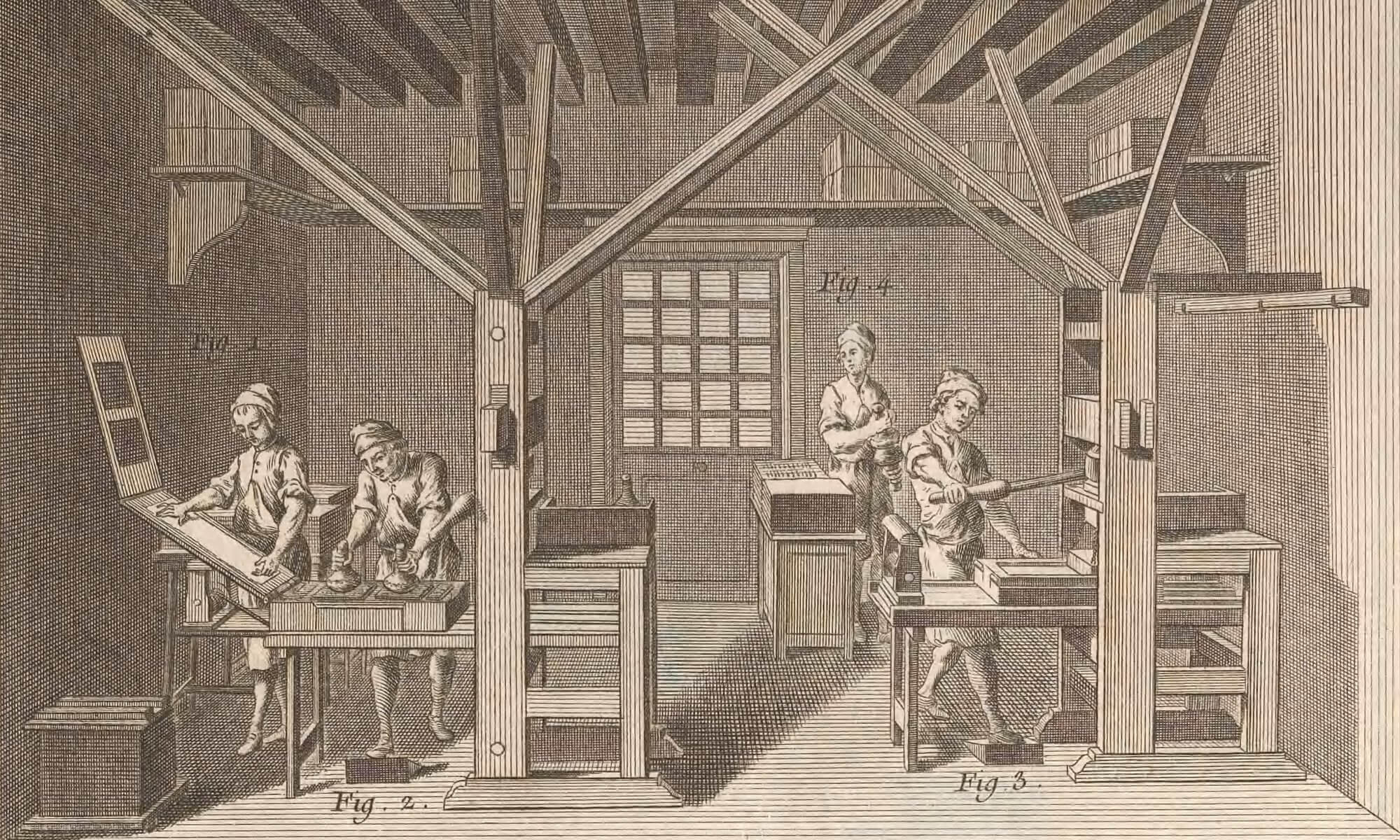Goal: The aim of this exercise is to get rid of any fear you might have about handling old books and to start to demystify what old books are.
Note: I like to do this exercise as a group in class with some librarians or teaching assistants on hand to help answer questions students might have about their books and to help them learn how to handle them. It also works well as a follow-up to the catalog wishlist exercise, so that students can start to think about how a catalog record represents a physical object. It works best with books that are in a language that the student reads, so that they can think about the interplay between text and typography and materiality.
Early printed books are weird and weird-looking and can feel hard to navigate and understand. This is especially true for the first time you hold one, but it can also be true for the thousandth time you hold one. The goal of this exercise is to help you start to feel comfortable working with one by simply practicing handling it and by giving you permission to ask “what in the world is this??” as often as you want.
You should go through this with a book in hand (which is to say, with a book in front of you on the desk, nicely cradled). Keep these instructions with you (you can print it out if that’s easier or if your library doesn’t allow computers in the reading room). Bring a sheet of paper and a pencil to jot down your thoughts as you’re looking at your book, but your primary focus is the experience of looking, not writing down notes.
- Choose a book to work with and make sure the reading room has it ready for you. (Your teacher should have at this point already taught you how to use the reading room and how to request books to look at. If this isn’t the case, find your special collection’s website and read through their policies on what’s allowed and how to gain entrance.)
- Make sure your hands are clean—go wash them before requesting your book, even if you think they are. And don’t put moisturizer or sanitizer on them after you’ve washed them. Just your hands, nice and clean and dry.
- Just let the book sit there! What draws your attention? Is it big/small/heavy/light? Is it pretty? Does it look “old” (whatever that means!)?
- If your book isn’t already on some sort of cradle or other support, now’s the time. If someone hasn’t shown you how to do this, ask for help! The key principle is that the book should always be supported by the foam/beanbag/whatever. Both book covers should be supported and the spine. Books generally don’t want to be opened more than 90° because it puts a lot of pressure on the joints and can cause damage, so shape your cradle appropriately. As you move through the book, you’ll need to adjust the cradle to keep it supported.
- Open your book to wherever you want and just look at it!
- Turn the leaves so you can see more pages! What seems familiar or strange?
- If you’re doing this with your class and your teacher or librarian, go ahead and ask them any questions you might have not only about handling but about the weird things you see. That’s the whole point of this—to ask questions and to enjoy yourself!
